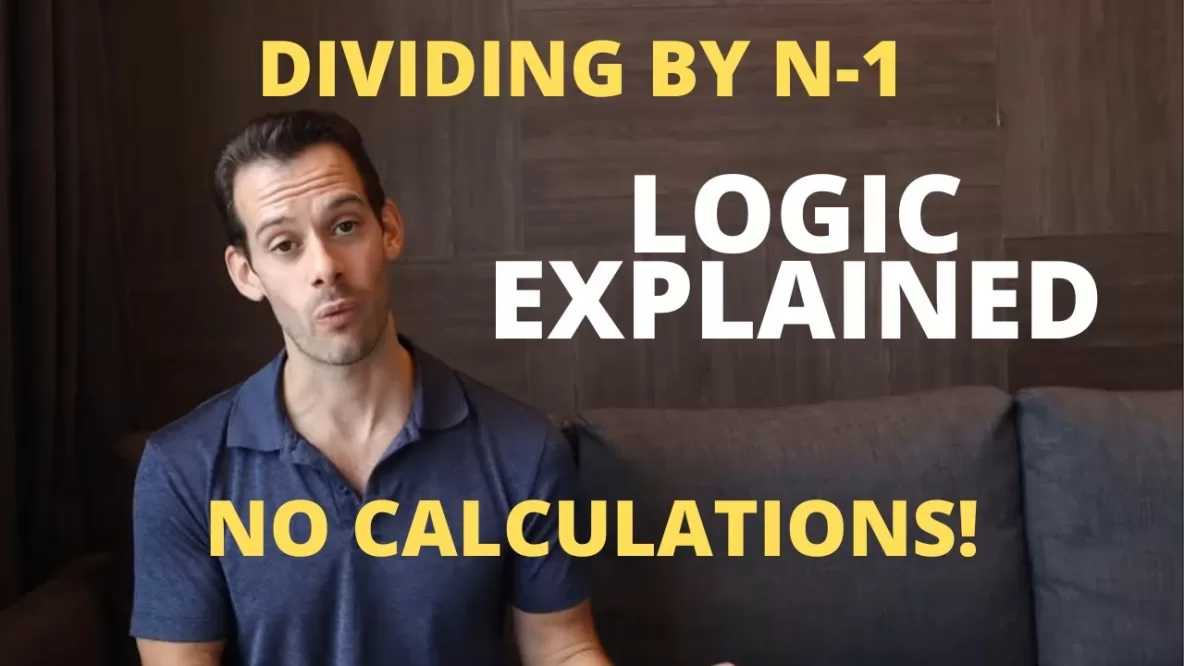In this video I explain stem-and-leaf displays or stemplots, which are part of exploratory data analysis developed by John W. Tukey. I explain the basic design of stem-and-leaf displays as well as several variations including back-to-back stem-and-leaf displays and stretched … Read More
How to Interpret (and Create) Frequency Distribution Tables
In this video I explain frequency distribution tables and grouped frequency distribution tables for summarizing data. I explain each of the columns, including the variable measured, the frequency, the proportion and percentage of the data at each variable, and the … Read More
n-1 Explained Conceptually
In this video I answer the common question of why we divide by n-1 when calculating variance from a sample, known as Bessel’s Correction. I focus on conceptual understanding of why this adjustment is needed and why n-1 is the … Read More
Mean Absolute Deviation, Variance, & Standard Deviation
In this video I explain how to use mean deviation, mean absolute deviation, variance, and standard deviation to assess dispersion in interval or ratio level data. I discuss each concept and practice calculating with a sample set of data, and … Read More
How to Use Interquartile Range to Identify Outliers
In this video I explain how to use the interquartile range in order to identify possible outliers in a data set. This can be done using the interquartile range times 1.5 for moderate outliers, or times 3 for extreme outliers. … Read More
Inclusive vs. Exclusive Interquartile Range
In this video I explain the difference between calculating an exclusive interquartile range and an inclusive interquartile range. While we generally use an exclusive interquartile range with an even set of scores, when we have an odd-numbered set of scores … Read More
Dispersion: Range, Interquartile Range, & Semi-Interquartile Range
In this video I explain simple ways of describing the dispersion of data that can be ordered or ranked. These are the range, the interquartile range, and the semi-interquartile range. I also briefly describe a more precise method for calculating … Read More
Dispersion for Nominal Data: The Variation Ratio
In this video I describe how we can describe dispersion or variability in nominal data by calculating a variation ratio. This is a simple measure of spread that tells us the frequency of scores that differ from the mode, which … Read More
How to Find the Precise Median (Interpolated Median)
In this video I explain how to find the precise median for a continuous variable with many repeated scores. I walk through an example of this that can be solved visually, then use this example to derive the formula for … Read More
Understanding Central Tendency
In this video I explain the strengths and limitations of the 3 measures of central tendency: the mean, the median, and the mode. This is part of a key theme of statistics, which is the importance of the choices researchers … Read More










